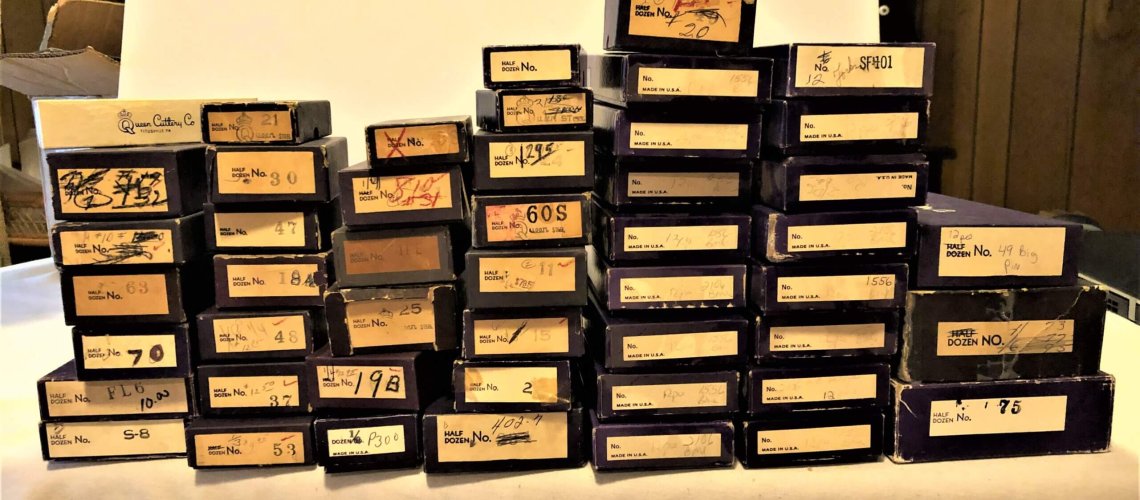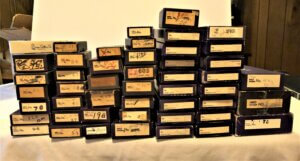Queen Boxes, Cases, and Knife Purses, 1947 – 1971
Fred Fisher, Brian Guth, Ashley, and Joe Mick, and Dan Lago 4-27-20
Queen Cutlery has changed the way it packaged pocket knives and fixed blades knives throughout its history. While changes during the collector era can sometimes be used to help date a knife and to assure that the knife originally came in a particular box or style, that is not so true for the early days after WWII.
Previously there has been no record of those changes and so this represents a first attempt at putting “boxes” into a timeline. There are six other documents in this set, which profile Queen boxes in the 1970s, 1980s, 1990s, and 2000 years, Robeson made by Queen, and a few rare Schatt & Morgan boxes. This initial effort will not focus on tableware or kitchen cutlery, showing only a few examples, but primarily on pocket and fixed blade knives
We appreciate your suggestions and additions to this effort. There will no doubt be future refinements
The earliest Queen Cutlery box Post-WWII we have found was a large box for a pair of “Kitchen shears,” shown only in the 1950 catalog as Model #230 (and in hunting knives as the #97 “game shears).” In Figure 1, you can see the white box shows the “Big Q” logo and the name of the shears (as “poultry shears” – probably someone renamed the product for the catalog with a broader name – Kitchen shears. Since this box was found in the factory attic after bankruptcy, it may have never been used for the public…). Still, this example shows Queen used boxes for home cutlery items at the time, but not usually with pocket or fixed blade hunting knives.

Figure 1. “Kitchen Shears” 1950 box, with “Big Q” logo, 1945-early 1950s.
After World War II, beginning with its first catalog in 1947, Queen saw its pocket and hunting knives as “tools” and sold them largely in hardware stores. They offered a variety of display cases that held knives for customers to look over, but the actual knives were kept in cardboard shipping/storage boxes of half a dozen or a dozen knives each, kept below the counter (Figure 2 shows a selection of such boxes that would have been held in a busy hardware store.
Figure 2. Hardware store storage boxes for Queen Cutlery knives
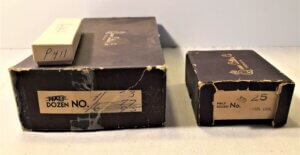
Figure 3. Large and small hardware shipping/storage boxes. The small white box is for a model P411, (an unusual “Deluxe” knife with a 4″ sheepsfoot paring knife); The large box is marked for #73, #77, and #95, for big fixed blades; and Medium small box on the right for #25 was the small barlow with razor and spear blades, showing “Queen Steel” stamped on box – middle ’50s– about 1955-1957.
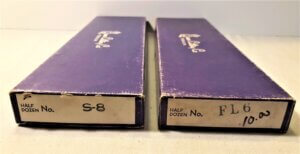
Figure 3. Medium, long boxes. We believe these are three and four-tined tableware forks, in “Deluxe” line with winterbottom bone handles.
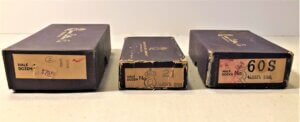
Figure 4. Pocket knife boxes in “half dozen” lots. #11 single blade slim trapper, “The dixie Switch” or eventually “the utility;” The #21, sleeveboard, and the #60S Barlow, 1-blade clip, with both the latter two shown as “Queen Steel, again 1955-1957.
Using the old retail strategy that “wholesale/distributor price was half of retail.” Suggests that the #11 price of $7.95 would have been around about 1978 or 1979, ( https://queencutleryguide.com//wpcontent/uploads/2020/01/1970s-Price-Lists.pdf. ) After considerable jumps in prices through the 1960s and 1970s (retail price estimate for a #11 in 1960 would have been $2.70 – almost 300% increase in 18 years – over 16% a year). The “stick on price label” and the condition of the box compared to others also suggest it is much newer.
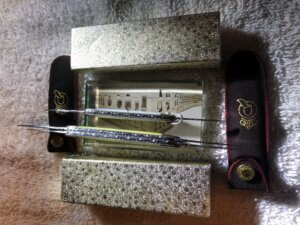
Figure 5. Sam Nelson file-worked Queen Pearl Knives. Several collectors recall these very special knives in gold or silver colored boxes such as these, with no logo.
This suggests that from time to time, Queen did box special highquality knives like these very special Mother of Pearl knives as early as the late 1940s or earliest 1950s – earliest post-WWII period. These knives often were provided with a small brown suede cloth “knife purse” with red or brown stitching and with “Big Q with Crown” logo from the late 1940s, and snap closures.
Since the knife purses have recently become more popular, we also show the only catalog listing for them, Catalog #82, used from 1947, showing dark suede cloth and white calf.
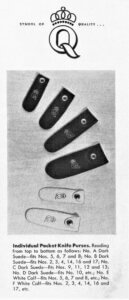
Figure 6, Queen 1947 catalog #82, the only time knife purses are in catalog, showing sizing. The white calf are very hard to find!

Figure 7. These white boxes with blue printing were also used with top quality knives – in this case, all three of these Mother of Pearl knives. Top knife, no tang stamp queen steel #6 blade etch (decade of 1960s); Middle knife, Queen with “Queen Steel #6 made in USA” tang stamp (U.S.A. addition suggests 1971); Bottom knife; Big Q tang also has Queen Steel #8 blade etch (suggesting early 1950s.) Notice on this box that the font is much thicker, it is a textured box, with easy-open cut-outs on side. It is probably an older box. So, Figure 7, suggests a similar “boxing strategy” for pearl pocket knives over 20 years.

Figure 8. A pair of #78 knives, the “hunting and combat” Stag handled knife, began in 1955. It can be seen both knives came with a high- quality two-piece box, labeled Queen Cutlery Company, with an “easy open” cutout on the top. These knives are dated, with “Queen Steel” tang with box in mid-1955 (left knife) and a little later (due to “QSteel” tang) to late 195os (right knife). They certainly fit the bill in terms of being a very special knife, while can see in Figure 3, above, that routine fixed blade knives were sold in blue storage/shipping boxes by the half dozen.
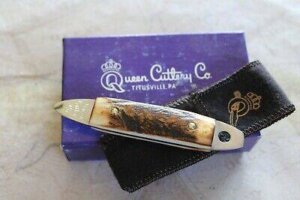
Figure 9. Purple box was used by Queen for small pocket knives in later 1950s and for many years after, but shows an early logo before 1980s.
We do not know when the purple boxes generally replaced the earlier white, we estimate in the early 1960s. However, there are some well documented Queen pearl letter openers that appear to come from the factory in white boxes through 1998 (see Figure 10).
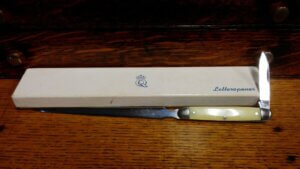
Figure 10. 1998 letter opener with early 1950 box, whether packaged by Queen or secondary seller – still an almost 50 years old box.
Unfortunately for collectors, there was a large inventory of purple boxes (and perhaps white boxes) that remained in the Titusville factory for many years, right up to the bankruptcy sale. A very good example is the stag handled knife opening pic shown in Figure 9, that was never offered by Queen in any Catalog sales but sold with a purple box on Ebay well after the factory closed after 2018. Note also in Figure 9, that the small suede cloth “knife purse” included in this sale, with brown stitching and “Queen knife” logo (but no snap) was used in the 1980s and remained in inventory until sold in bankruptcy and might also be used in many newer items. When items are combined from different eras is a useful “alert” for diligent collectors, suggesting that “parts” have been combined to make a saleable item more interesting. In summary, while some early boxes can be identified, Queen had a habit of using existing materials (including boxes) and was quite opportunistic in preparing knives for sale. While early boxes can help reassure a collector that an item is right, one needs to be careful in relying too heavily on a box rather than the details of the knife. It might be useful if both knife and box are consistent, but the above shows, that is simply hard to determine. Certainly, because many knives in the early period were sold without boxes and many users would have thrown away a box over the 70+ years. The box should not be considered too important in early post-war knives, but becomes more important in the later years of the company, as shown in future articles in this series.

